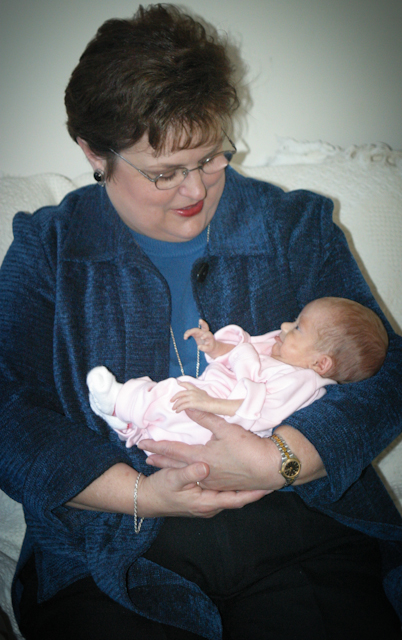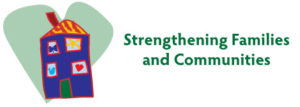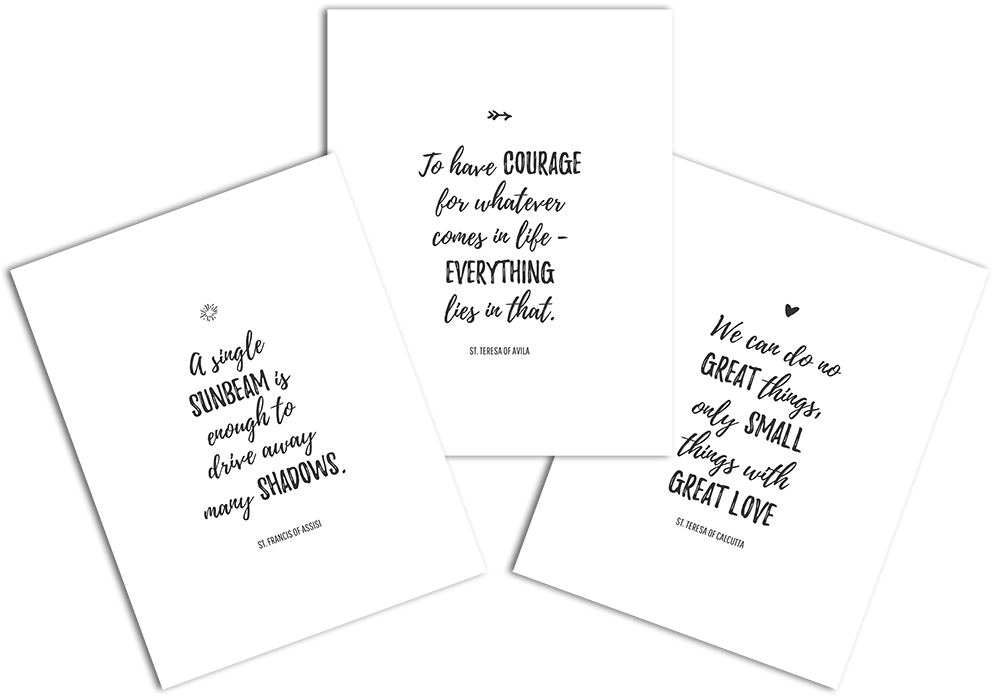Recently, my mom was asked to speak at a kick-off breakfast for National Child Abuse Prevention Month. A retired elementary school teacher, she was chosen because she has been volunteering as a Court Appointed Juvenile Advocate (CAJA) for several years. She shared her speech with me, for reasons you’ll see in a moment, but I thought it was so powerful that I asked her if I could reprint it here.
My mom is just one person, but she’s one person who saw a need and decided to do what she could to fill it, and she is making a difference in the lives of children in her area. She does it because she believes, as I do, that all children are valuable and all children should be celebrated and nurtured.
CAJA Speech: April 1, 2011
Thank you for allowing me to share my personal experience as a CAJA volunteer.
Dec. 27, 2002 was a very exciting and a very scary day for me.
It was exciting because it was the day that my first grandchild was born.
It was scary because Sarah Kate was born 2 ½ months early.
She was only 15 inches long and she weighed only 2lbs. 9oz.
The first time I saw her, she hardly looked like a baby at all.
She was covered from head to toe with wires and tubes.
Her little legs and arms were no bigger around than my fingers. Every vein in her head was visible, because she was so thin.
She stayed in the NICU for almost 2 months and was finally discharged from the hospital at a whopping 3 lbs and 14 oz! And then WOW! When she got home and she started receiving her parents’ tender loving care, she really began to thrive!
Now I know that you’re probably wondering why I am telling you this story about my granddaughter when I’m supposed to be talking about CAJA.
There are 2 reasons.
The first reason is because Sarah Kate was my inspiration for becoming a CAJA volunteer. During that agonizing time, when Sarah Kate was so fragile, I begged God to save her life and I promised Him that in the future I would do something special for children. I asked God to give me a sign – just show me what he wanted me to do. He gave me an answer almost immediately.
There was an article in the Sand Mountain Reporter about CAJA and a new training course that was coming up.
— It told about how CAJAs work with children – I knew I could do that, I had taught 1st grade for 27 years.
— It said CAJAs wrote reports for the court – I knew I could do that, I could spell and punctuate and make my subjects and verbs agree.
— Then it said CAJAs conduct interviews and testify in court – Whoa! I’m basically shy around strangers and easily intimidated by strong lawyerly types. I didn’t know if I could do that or not. But — I knew somebody who could.
I called my friend Jenny. Now Jenny is a retired school counselor and college recruiter who just oozes with confidence and charisma. I started telling Jenny about CAJA and she stopped me – she said, “You’re not going to believe this, but I’ve already been thinking about doing CAJA work; I have their application on my desk right now.” I had asked God for a sign – I felt like He had placed a 30 ft. X 40 ft. billboard right in my front yard with flashing neon lights that said “CAJA! CAJA! CAJA!”.
So Jenny and I signed up, completed our 40 hours of training, and we have been working together on CAJA cases for almost 8 years.
My second reason for telling you about my granddaughter is that I want to contrast Sarah Kate’s life with the lives of actual children that Jenny and I have worked with.
You need to know that Sarah Kate is now 8 years old and she has cerebral palsy in her legs because of brain damage related to her premature birth.
She can walk, but her gait is awkward, she tires easily, her balance is poor, and she falls a lot.
She can not run or jump like other children.
She has had surgery on her spine to help relieve some of the spasticity in her legs, and will likely have other surgeries in the future.
She wears braces during the day and casts at night.
She has been in physical therapy continuously since she was 9 months old.
But… Sarah Kate is one of the happiest, most well-adjusted children you will ever meet. How can this be? I believe it is because she was born into a stable, loving, supportive family.
Many children, even though they may not have been born with physical or mental disabilities, have disabilities nevertheless because of the neglect and abuse that they have endured. I have changed the names, but the children I’m going to tell you about and the conditions they live in are real. For illustration purposes, please allow me to contrast their lives with Sarah Kate’s life.
1. Sarah Kate has two parents, both living.
The four Hall children lost their father in an accident at work. Their mother could not take care of four children by herself and was forced to give them up.
2. Sarah Kate’s parents are married.
Marcus’s mother wasn’t married to his father – he doesn’t even know who his father is.
3. Both of Sarah Kate’s parents live in the home with her.
Sandy’s mom and dad are in prison.
4. Sarah Kate’s father has a well-paying job, which allows Sarah Kate’s mother to be a stay-at-home mom, and take care of Sarah Kate’s special needs.
Kelly’s father has a job too, but he is tired of paying child support for her, so he is having his parental rights terminated. Kelly’s mother doesn’t have a job, unless you call prostitution a career.
5. Sarah Kate lives in a nice home in a safe neighborhood.
Morgan was homeless, living in a car, traveling from state to state, as her teenage parents tried to escape shoplifting charges.
6. Sarah Kate always has nutritious food to eat and clean clothes to wear.
Katherine’s parents withheld food and hid her clothes to torture her.
7. Sarah Kate receives praise and rewards for good behavior and for misbehavior she receives lectures, time out, or restriction of the TV, DVD, Wii, DS, or iPod.
Karen’s parents think that appropriate discipline is cursing her, slapping her, and humiliating her by shaving her head, and Derrick’s parents just overdose him on cough medicine
when they don’t want to be bothered with him.
8. Sarah Kate has attended the same school during her kindergarten, 1st and 2nd grade years. She is excelling in all academic areas and has developed some very strong
friendships.
Connie has attended 6 different schools in less than 2 years as she has been shifted around between various foster homes and group homes. Her grades are suffering and she doesn’t feel that she has any friends anymore.
9. There is no domestic violence in Sarah Kate’s home. Her parents love and respect each other very much.
Connie’s and Darren’s father beat their mother regularly for many years until he was finally convicted for assault. Their mother still suffers both physically and emotionally from the years of abuse. So do the children.
10. Sarah Kate’s parents do not have any mental illnesses.
Derrick’s stepmother has schizophrenia; Eric’s mother is bipolar; and Sandy’s mother has Alzheimer’s.
11. Sarah Kate’s parents do not abuse alcohol or drugs.
In almost every family that Jenny and I have worked with, alcohol or drug abuse have played a major role in the neglect or abuse of the children.
12. Sarah Kate has a wonderful network of support beyond her immediate family – grandparents and an aunt and uncle who are very active in her life; a loving church ; close family friends and neighbors.
Janie doesn’t have anyone to depend on except her mother and her mother is often not dependable.
13. And finally, Sarah Kate has a bright future. Her parents are saving – a lot! – for her college education. At this point, they think that she might become a veterinarian.
Most of the children we work with don’t think much about the future – they are too scarred by their pasts and struggling to survive their present.
Now I don’t want to give the impression that I think Sarah Kate’s family is immune to problems — I know that a catastrophic illness or accident, loss of a job, a natural disaster, lots of things could happen to them and throw them into crisis just like any other family. I just hope that there would be someone, maybe a CAJA, who would be there to help.
I also don’t want to give the impression that Jenny and I create perfect worlds for our CAJA kids to live in. We don’t. The family problems are complex and the solutions are not easy. But we work to try to find the best possible living conditions for our kids given their circumstances. We strive to see that our kids have their needs met, that they are safe, that they are loved and respected as all children should be. We want to see them thrive during their childhood and make steady progress toward a successful adulthood. And, of course, we don’t do this alone – we are just one part of a team that includes DHR, GALs, judges, and other support personnel.

Working as a CAJA volunteer has been one of the most rewarding things I have ever done. I am proud to be a part of this organization. We are 70,000 strong nationwide and growing every day. CAJA is a powerful voice in a child’s life. I believe that CAJA will become even more relevant in the years to come as our nation struggles with poverty, drug abuse, domestic violence, sexual crimes, illegal immigration, and other social issues.
Thank you for allowing me to share with you today.
I would like to close by borrowing a quote, author unknown.
“While on my life’s journey, one day passing by, I saw a small child…bruised, dirty, and hungry. I became very angry and I asked God ‘How could you permit this? Why don’t you do something about it?’
God remained silent. Then in a while He quietly said…
‘I did do something…I Made You!’ ”
For more information on CAJA/CASA programs, visit http://www.casaforchildren.org/

